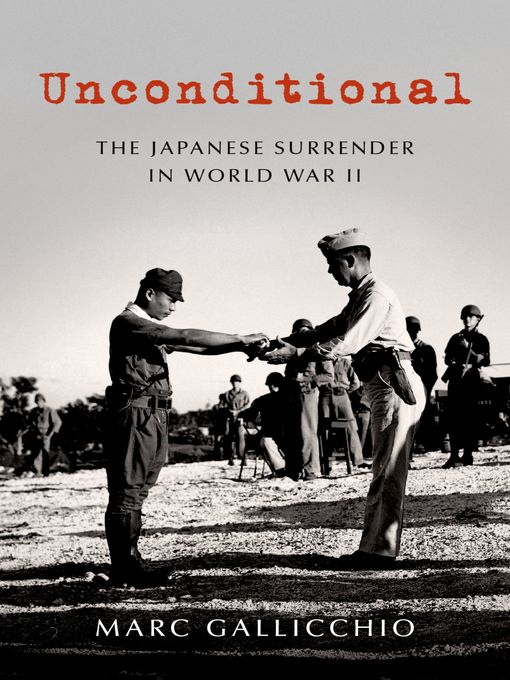-
Creators
-
Series
-
Publisher
-
Release date
July 2, 2020 -
Formats
-
Kindle Book
-
OverDrive Read
- ISBN: 9780190091125
-
EPUB ebook
- ISBN: 9780190091125
- File size: 8329 KB
-
-
Languages
- English
-
Reviews
-
Library Journal
June 19, 2020
In 1995, the Smithsonian opened an exhibit featuring the Enola Gay, the B-29 bomber that dropped the atomic bomb on Hiroshima. The exhibit stoked controversy, as from its inception, the entire idea of unconditional surrender--a concept to which the decision to drop the atomic bomb was related--caused disagreement. Gallicchio (history, Villanova Univ., PA) examines the ideologies behind the premise of requiring Japan's unconditional surrender and its relation to Soviet entry into the war against Japan. The author does well in covering the differing points of view of various United States government officials, along with the competing factions in the Japanese leadership. He explains the arguments against using atomic bombs against Japan and the alternative approaches, including an invasion of the mainland. Gallicchio argues that forcing Japan's unconditional surrender was crucial to creating a more democratic and less stratified postwar society. VERDICT A scholarly work, this will appeal most to researchers and informed readers interested in the diplomatic history of World War II.--Matthew Wayman, Pennsylvania State Univ. Lib., Schuylkill Haven
Copyright 2020 Library Journal, LLC Used with permission.
-
Kirkus
May 15, 2020
The tortuous history behind America's decision to insist on Japan's unconditional surrender. In this tightly focused narrative, history professor Gallicchio writes that when Franklin Roosevelt announced in 1943 that the war would end when Germany and Japan surrendered unconditionally, few objected. It became a controversy in 1945 when Japan's defeat seemed inevitable to everyone except Japanese leaders, who maintained that all their countrymen would die before surrendering. Two administration camps existed. Secretary of War Henry Stimson led those convinced that Japanese leaders were more likely to surrender if assured that the emperor would keep his throne. Dean Acheson, who would become secretary of state in 1949, led those who argued that this would prolong the war by convincing the enemy that America was weakening. Harry Truman listened but did nothing, and the Navy was lukewarm to any assurance. Having annihilated enemy naval and air defenses, Navy leaders were certain that a blockade would starve Japan into submission. Army leaders, led by Gen. George Marshall, argued that this would take years and that war-weary Americans would lose heart. In any case, public opinion supported unconditional surrender. The Army argued for an invasion of the home island, an immense project. In the end, a second atomic bomb and the Soviet invasion persuaded Japan to give in. Its offer to surrender included a clause protecting the emperor, which the U.S. rejected, returning a softened version that Japanese leaders, after heated debate, accepted. But as the author points out, the controversy persisted. During the war and until the 1960s, advocates of modifying unconditional surrender were conservatives who proclaimed this would save American lives while liberals protested that "the real aim of the 'emperor worshippers'...was to maintain Japan as a bulwark against Russia and revolution." After the '60s, matters reversed when liberal "revisionist" histories claimed that Japan was on the verge of surrendering and that Truman brushed off the evidence and insisted on dropping the bombs to intimidate Russia. A definitive account of complex political maneuvering that accomplished little.COPYRIGHT(2020) Kirkus Reviews, ALL RIGHTS RESERVED.
-
Formats
- Kindle Book
- OverDrive Read
- EPUB ebook
subjects
Languages
- English
Loading
Why is availability limited?
×Availability can change throughout the month based on the library's budget. You can still place a hold on the title, and your hold will be automatically filled as soon as the title is available again.
The Kindle Book format for this title is not supported on:
×Read-along ebook
×The OverDrive Read format of this ebook has professional narration that plays while you read in your browser. Learn more here.


